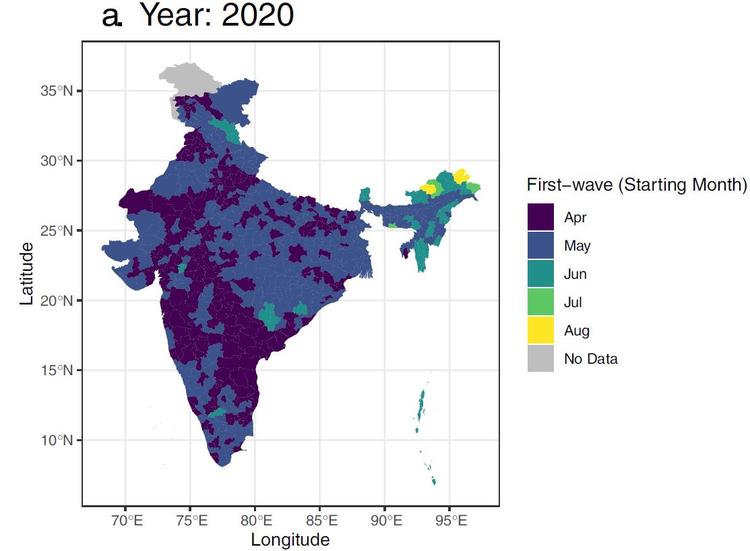
Characterizing COVID-19 waves in urban and rural districts of India
Type
Understanding spatial determinants, i.e., social, infrastructural, and environmental features of a place, which shape infectious disease is critically important for public health. We present an exploration of the spatial determinants of reported COVID-19 incidence across India’s 641 urban and rural districts, comparing two waves (2020–2021). Three key results emerge using three COVID-19 incidence metrics: cumulative incidence proportion (aggregate risk), cumulative temporal incidence rate, and severity ratio. First, in the same district, characteristics of COVID-19 incidences are similar across waves, with the second wave over four times more severe than the first. Second, after controlling for state-level effects, urbanization (urban population share), living standards, and population age emerge as positive determinants of both risk and rates across waves. Third, keeping all else constant, lower shares of workers working from home correlate with greater infection risk during the second wave. While much attention has focused on intra-urban disease spread, our findings suggest that understanding spatial determinants across human settlements is also important for managing current and future pandemics.

